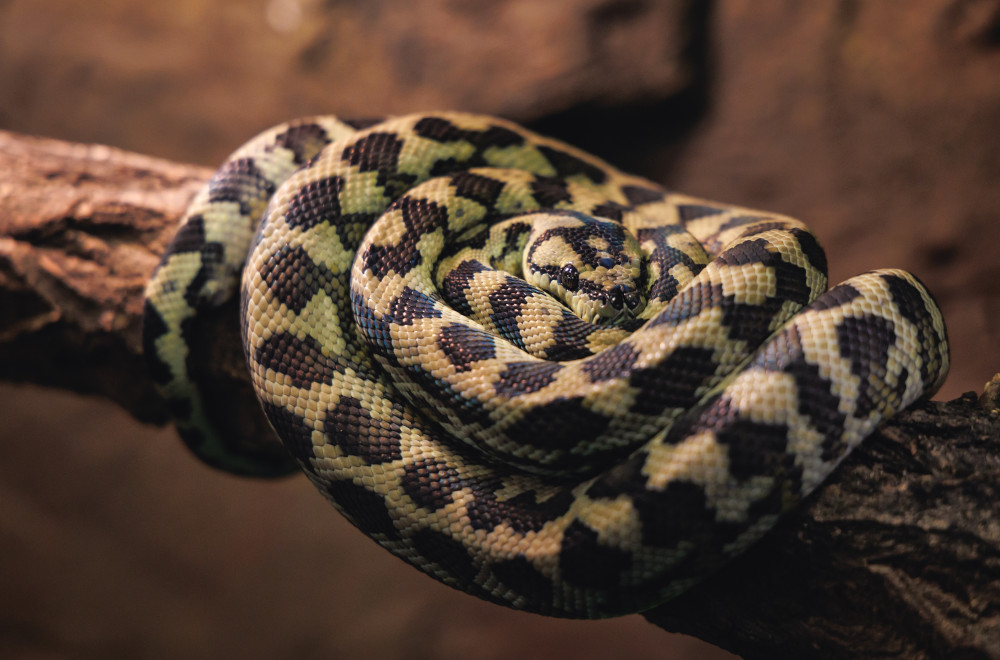
Large semi-arboreal (spending some of their time in trees) pythons of the genus Morelia are common in the suburbs of Australian cities such as Sydney, Brisbane, Cairns, Perth, and Darwin. Throughout most of this range, the most common python is the ‘carpet python’, Morelia spilota. There are 6-8 subspecies within the genus with one, the Coastal Carpet python (Morelia spilota mcdowelli), probably being the most common python kept in Australia.
General information
Common name: Coastal Carpet python
Scientific name: Morelia spilota mcdowelli
Natural habitat: They are widespread in eastern Queensland and north-eastern New South Wales. They may be encountered on the ground, draped across boughs of trees, or coiled up in undergrowth in rainforest, wet or dry eucalypt forest, heathland, pasture, and agricultural and urban areas. Carpet pythons, however, prefer arboreal living conditions (tree dwelling), frequently being found residing in trees and the roofs of houses even in well-settled suburban areas.
Wild diet: They are an ‘ambush predator,’ a carnivore eating a wide variety of mammals and birds.
Appearance: The Coastal Carpet python is the largest subspecies in the Morelia genus, growing up to 2.7–3.0 metres. On the top they are generally olive brown to tan in colour with paler blotches and stripes, though pattern and colour are highly variable. The belly is usually cream.
Behaviour: Coastal Carpet pythons are not social animals, though sometimes they come together in spring to breed. These pythons are diurnal and nocturnal i.e., active during the day and night.
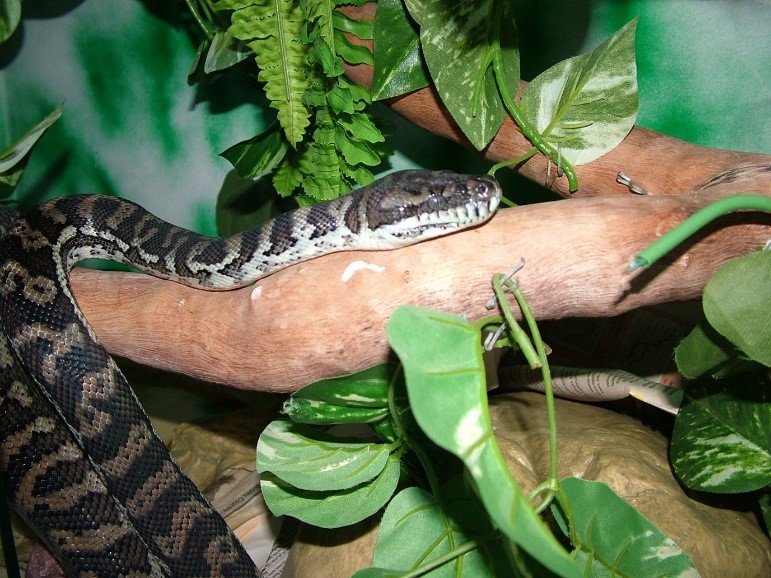
Keeping a Carpet python
Even though these are a common species, you should carefully consider whether a Carpet python is the right pet for you. For information on what to think about before making that decision, please see this article. You also must obtain a licence to keep them. There are a wide range of sources from where you can obtain a Coastal Carpet python, but you must not take them from the wild.
Carpet pythons are not social animals, which means that you don’t have to worry about them getting lonely. In fact, keeping multiple pythons together is stressful for the snakes and causes competition for resources, preventing them from thriving. For these reasons, it’s best to house only one python per enclosure.
Life expectancy for Carpet pythons in captivity is up to 20-30 years. It is best to acquire an adult or a juvenile who is at least 3–6 months of age. By that time, they should be established, feeding regularly, and demonstrating robust growth. (Young pythons, of most species, can be very difficult to start them feeding. This is best done by an experienced breeder.)
Ecdysis (shedding) in Carpet pythons occurs in a single piece; shedding frequency depends on growth rate. Watch for retained shed, especially over the eyes and on the tail tip.
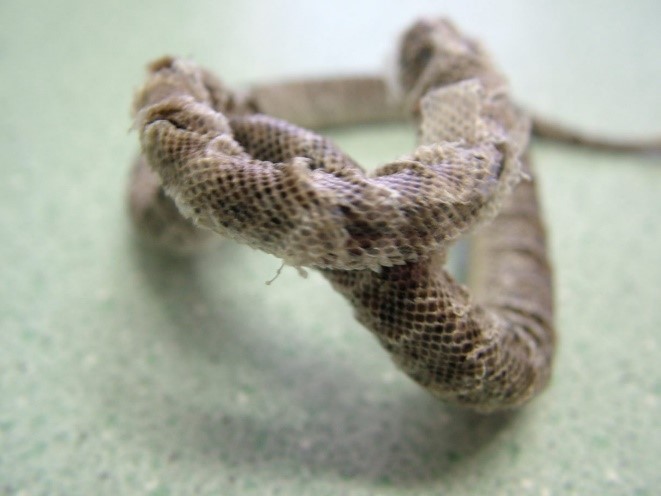
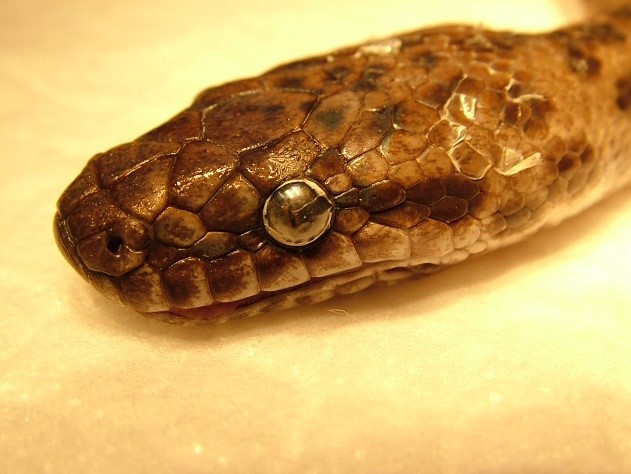
Enclosure
- Size: Carpet pythons need an enclosure that is correctly proportioned in relation to their size (i.e., the larger the snake, the larger their enclosure should be). The enclosure must be large enough to allow for climbing as well as crawling around on the ground. An appropriate enclosure for an adult Carpet python (1-2 metres in length) could measure 2m long, 1m wide, and 2m high.
- Substrate: newspaper or paper towels can be used and are very easy to use, and are hygienic as they can be thrown away when dirty.
- Carpet pythons’ preference for height should be catered for by providing branches and platforms at different heights.
- A shelter should be provided This could be a wooden or cardboard box, an upturned bowl, or a plant pot. It should be large enough for the snake to fit inside it completely when coiled up.
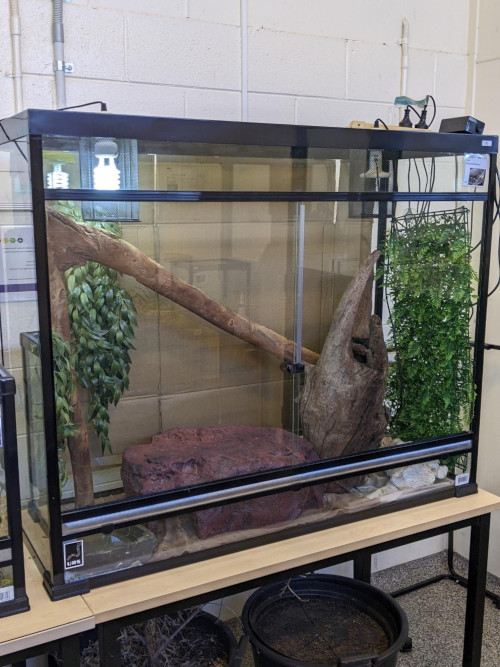
Heating and lighting
Coastal Carpet pythons are primarily nocturnal, but they are also known to be occasionally active during the day. This means that they are highly likely to benefit from having a brightly illuminated environment during the day, as well as access to UVB lighting. They need a thermal gradient in their enclosure (meaning that there should be variation in temperature in different places in their enclosure, so they can choose what temperature they want to be at to help regulate their body temperature) and this should run both vertically and horizontally, with the cooler end of the enclosure 24°C–26°C and the hotter end at 35°C-38°C. During the night the overall temperature of the enclosure can be decreased to 22°C-25°C.
Humidity
Coastal Carpet pythons seem to do best with a humidity between 40-60%, with free access to a hide lined with moistened sphagnum moss or substrate.to use as needed. Ambient humidity should be tracked via digital probe hygrometer with the probe placed in the middle of the enclosure.
Diet
Coastal carpet pythons are carnivores for their entire lives. They should be fed a variety of thawed frozen humanely killed mammals (rats, mice, guinea pigs, and rabbits) and birds (day-old chickens, adult chickens, and ducks). A good rule of thumb is to provide a prey item(s) which totals around 10% of your python’s weight, assuming that the python is not obese. Each item should be no more than 1.5x larger than the python’s widest point.
Under no circumstances should live prey be fed to your python.
The frequency of feeding depends on the age of your python:
- Young carpet pythons can be fed every 1–2 weeks
- Adults have slower metabolisms and should be fed every 2–4 weeks depending on their body condition
Behaviour
Although carpet pythons can be nippy as hatchlings, most grow into docile adults. However, care must be taken when feeding, as these snakes have a strong “feeding response” that can be mistaken for aggression. (A feeding response is a lightning fast strike at the food, followed immediately by throwing coils around the food to constrict it. Occasionally a snake will mistake a person’s hand for food…)
References
Swan M (2007) Keeping and Breeding Australian Pythons. Mike Swan Herp. Books
Elliott A (2014) A Guide to Australian Pythons in Captivity. Australian Birdkeeper Publications
Fearn S, Robinson B, Sambono J, Shine R (2001) Pythons in the pergola: the ecology of “nuisance” carpet pythons (Morelia spilota) from suburban habitats in south-eastern Queensland. Wildlife Research 28:573–579
